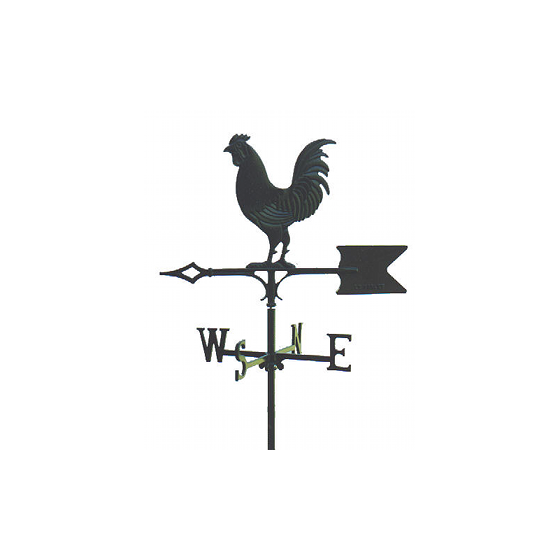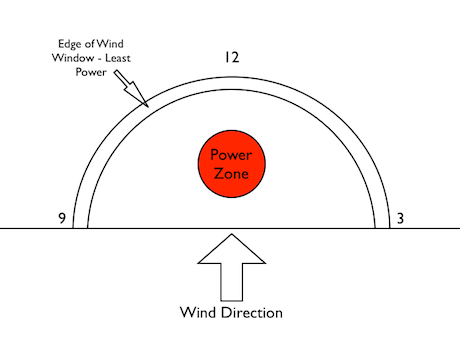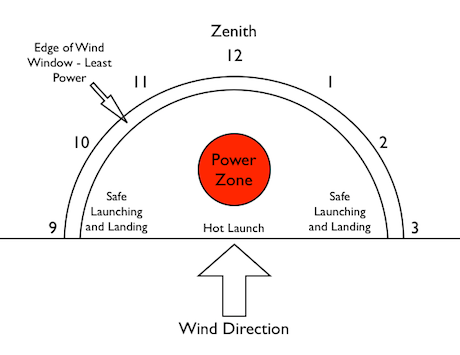
Where Is The Wind Blowing From?
The final and most important detail we need to know about the wind is which way it is blowing. While this seems obvious, we need to know more specifically than in most circumstances and so have developed several techniques to help us pinpoint it more precisely.
This can be done in several different ways:
Use Your Head
The easiest (at least for me as I have rather large ears!) is to use your ears and the back of your head. Simply turn your back to the wind and turn your head until you can feel the wind on the backs of both your ears. At that point you are looking directly downwind.
Flags are also another good marker, but make sure you’re facing the flag at a good angle, normally directly in front works best, as it’s often very difficult to see which way it is blowing exactly from the side.
As kites will always fly downwind of the person controlling them they too can be used to determine the wind direction. Again make sure you get a good angle on the kite when looking at it when using this method as at distance it can often be difficult to determine the direction effectively.
Using The Sea
Waves can be used as they will often be blowing in the same direction as the wind. However this is not the most reliable method as in a lot of circumstances its quite easy to confuse this wind blown chop, which will help us determine wind direction, with ocean swell, which will not.
Waves are formed by the movement of wind over the surface of the sea. Ocean swell starts somewhere many kilometers from the shore. As wind blows over the surface of the sea small wavelets are formed. Over time and distance these wavelets form together to create bigger and bigger waves, developing a fairly uniform wavelength, that is the distance between the waves and the size of the waves is fairly consistent.
These waves will (generally) all be traveling in the same direction and will gobble up any smaller waves as they move to grow even bigger. If the wind blows for long enough over these larger waves enough smaller waves will be created (and eaten up) to eventually change the pattern and the direction of the waves. When these waves reach our shores they come crashing in in the same pattern that they formed 1000’s of kilometers away.
Wind blown chop is by contrast a much more localised effect, rather than being the result of the combined efforts of the wind and waves over 1000’s of kilometers they are formed by the local wind. Wind blown chop will be much smaller and much more “messy” than ocean swell as the waves haven’t had time to combine and arrange themselves. It is these waves that you should look for to determine the local wind direction.
What Winds Should I Fly My Trainer Kite In?
If you bought your trainer kite new it should have come with some detailed instructions not simply about how to set up the kite but also what winds it is safe to take the kite out in. If you bought you kite second hand or you can’t find these guidelines a quick check on the internet should give you all the information you need. We’ve already talked about determining wind speed in a earlier lesson but please, please stick to the manufacturers guidelines. If you don’t you risk injuring yourself, other people and damaging the kite.
Determining Where The Kite Will Fly
The wind window is the area where you can fly your kite, and is very important for two reasons:
Your kite generates different amounts of power and will pull in different directions depending on where it is positioned in the wind window.
When you understand the wind window you know where to place your kite for maximum safety in windy or gusty situations. An unexpected gust of wind can carry dangerous consequences.
The wind window is broken down into three main sections which are pictured in the diagram below. These sections are:
The Shoulder Or Edge Of The Wind Window
This area is the closest the kite can fly into the wind and is the area that produces the least amount of power. For example, if the kite is flying directly above your head it is in this zone. You want to keep your kite in this zone when you are taking a rest or checking out that hottie walking past. This should be your default position for the kite as it is the safest.
The Medium Power Zone Or Intermediate Zone
This area is the area in between the shoulder of the window and the power zone. The kite starts to build speed when flying through this zone and it “catches” more wind than it does at the shoulder. These two things give it more power. If your kite is in this zone pay attention. It is really easy to send it into the power zone and if you aren’t ready, you can easily be overpowered.
The Power Zone
This zone is aptly named. Here your kite is moving fastest and catches the most wind, so it has the most power. You will use this zone to generate the power you will need for all of your kiteboarding moves. You don’t want your kite in the power zone unless you send it there, so pay attention and keep your kite under control.
Finding the Wind Window
Now that we know what the wind window is, how do we find it? To find the wind window just follow these steps:
- Find the direction of the wind. See the chapter on determining wind direction.
- Turn and stand with your back to the wind (so that you are facing downwind).
- Extend your arms straight out on both sides and imagine lines drawn out in both directions.
The wind window is the area downwind of you and it ends at the imaginary lines you drew out sideways with your arms, as well as directly overhead.
Always find out the direction of the wind and get a picture of where the wind window is before you launch your kite. Also, keep in mind that if the wind changes direction, the wind window is going to move too; it is always downwind of you.
Describing The Wind Window
The final thing we will go over about the wind window (right now) is the lingo. To describe where their kite is in the wind window, kiteboarders have broken it down into segments like a clock. To get an idea of the ‘coordinates’ of the wind window are, just:
Stand with your back to the wind, so that you are facing downwind. Then extend your arms out to both sides. Imagine that your arms are the arms of a clock. If your left arm is extended straight out it will be pointing to 9 o’clock position. Your right arm will be pointed at 3 o’clock. Directly above your head is 12 o’clock. Evenly spaced out between 9 and 12 are 10 o’clock and 11 o’clock. Between 3 and 12 are 1 o’clock and 2 o’clock. Take a look at the diagram above to make things clearer.
Now you should be able to describe the wind window in terms of power zones and you should be able to navigate it. So when someone says something like ‘Launch your kite at the shoulder of the wind window, then fly it up to the 12 o’clock position,’ you don’t look at them as if they’re an idiot.

